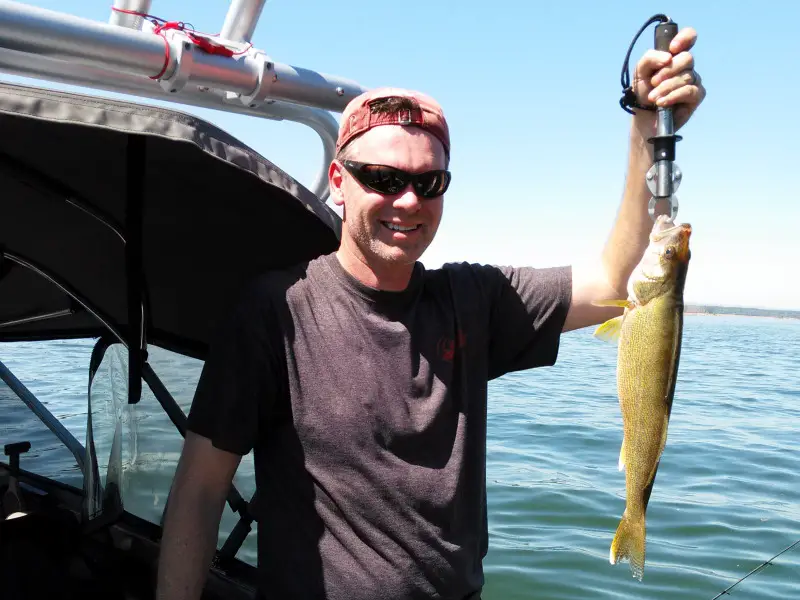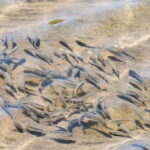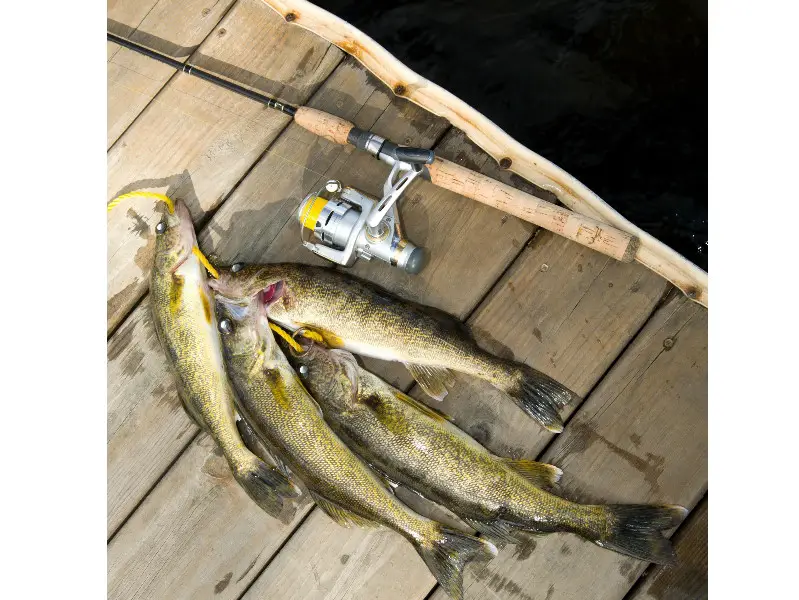Countless factors go into having a successful fishing trip – the condition of the water, type of lure, bait, and much more. However, without a doubt, the correct tackle is essential to a successful excursion. And if you’re looking to catch the line-shy walleye, you’ll want to ensure your equipment is spot on.
You do not need a steel leader to catch walleye. Steel leaders are better for fish that have teeth with sharp edges, and a walleye’s teeth have pointy tips but dull edges that typically won’t cut the line. A fluorocarbon leader is lighter and, therefore, more suitable for catching walleye. It’s also harder to see and less susceptible to bite-offs.
It’s not always easy to choose the right gear for the right kind of fishing. But you must ensure you get the right bait and tackle to succeed. This article will discuss some great tips and tricks you can use when it comes to walleye fishing.
Note: most links in this article are Amazon.com Affiliate links, see Affiliate Disclosure, thank you.
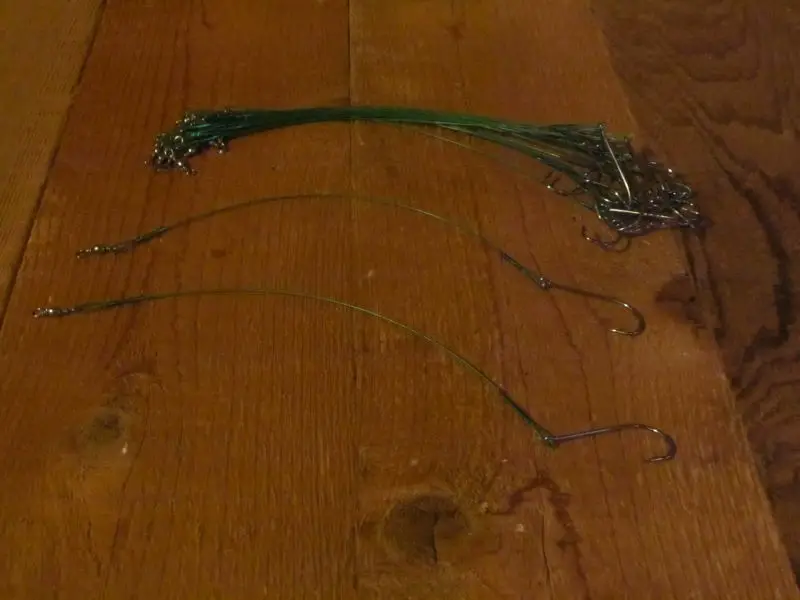
Why a Steel Leader Isn’t the Best Choice for Walleye
You’ve probably heard the term “leader” when fellow anglers talk about fishing. I’ll bet you’re under the impression that leader is another word for the line. Well, to a certain extent, this is true. When referring to fishing, a leader is a line between your main line and your hook with your lure or bait.
Therefore, a steel leader is a metal wire used to connect the main fishing line to the hook or lure, usually for the use of heavy hooks to fish in deep water. They’re called steel leaders because they’re made from galvanized steel or stainless steel, which adds strength and durability to the equipment.
These wire leaders are typically purchased ready-to-use. This means they will be a set length and weight rating with a snap crimped on one end and a swivel crimped on the other end. I remove the stock snap and replace it with my favorite duo-lock snap.
While the steel leader has its advantages, using it when fishing for walleye is unnecessary. The goal of the steel leader is to avoid abrasions from the fish’s teeth and other objects in the water. However, walleye are not known to have exceptionally sharp-edged teeth.
Not only do steel leaders look unnatural underwater, but they’re bulky and can be easily spotted by the keen eye of a walleye. This fish is a fussy feeder and will, more often than not, avoid something that seems unusual.
Fishing for walleye is often best done in shallow waters. The heavy steel leader is also likely to sink lower than where you’ve intended to fish. This attests to the fact that many anglers have caught more walleye with a lighter setup.
Live bait can also benefit from lighter leaders when targeting walleye. A lighter leader will allow the bait to move freely, whether it be a minnow or a nightcrawler. However, live bait might result in a more aggressive walleye bite so try not to go too light.
Additionally, fishing for walleye is a delicate process – they’re line-shy fish that will avoid anything that doesn’t replicate their natural prey. Thus, utilizing lighter, thinner leaders for walleye are recommended to prevent your bait from looking suspicious.
Nevertheless, a steel leader can be handy, mainly if you’re fishing in waters with other big fish like pikes that sometimes go for your walleye-intended bait and cut your line with their teeth. However, using a steel leader will lower your chances of catching a walleye overall, so you should consider other leader material.
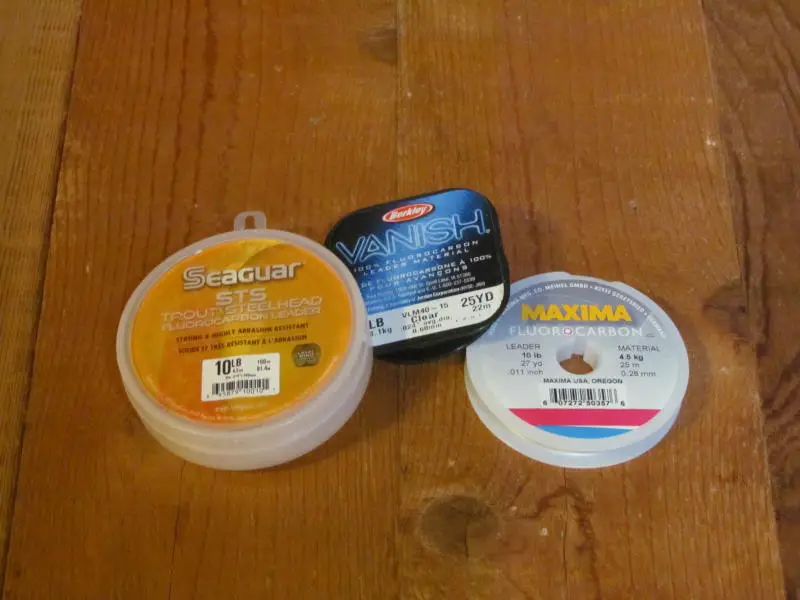
Try a Fluorocarbon Leader Instead
Fluorocarbon leaders are a trendy fishing line among many anglers. However, the term “fluorocarbon” is a misnomer, as fluorocarbon is not a compound but a type of synthetic polymer that is then made into the line.
According to the International Game Fish Association, fluorocarbon leaders are made from a synthetic fluoropolymer compound that allows for greater strength and sensitivity than the standard monofilament fishing lines.
This type of leader continues to grow in popularity because of its low visibility underwater, making them ideal for situations where you need to keep your bait hidden from wary fish, such as the walleye.
Fluorocarbon fishing lines are also highly abrasion-resistant. Thus you can expose them to sharp rocks or other abrasive objects without the worry of them suffering damage.
There are several advantages to using a fluorocarbon leader when fishing for walleye:
- They are practically invisible: Because walleyes are incredibly picky feeders, using a fluorocarbon leader will enhance your possibility of catching. The leader is almost entirely invisible underwater, making it difficult for a walleye to avoid the line, even at mid day.
- They are abrasion-resistant: While less abrasion-resistant than a steel leader, the fluorocarbon leader offers versatility. It’s abrasive enough to avoid damage from rocks or other objects beneath the water. However, if you’re aware of other big fish like northern pike in the water, you should use a thicker fluorocarbon leader to avoid bite-offs.
- They have limited stretch and greater sensitivity: An angler can have a better feel for bites due to increased sensitivity and limited stretch when utilizing a fluorocarbon line.
- They are lightweight: A lighter leader enables the bait to sit at the intended depth at which an angler wishes to fish. In the case of walleye fishing, lightweight leaders are perfect for shallow waters. The bait will also appear more natural. Also, light leaders are well suited to open water free of snags and other objects that could damage your leader.
However, fluorocarbon lines are expensive and often very difficult to tie knots. Wetting the line before tying the knot is recommended to ensure the knot sets. This setup is not recommended for trolling or crankbaits but works well when drop-shotting and jigging.
If you want a leader with a bit more stretch to help absorb the shock of a big bite mono leader is your best choice. Mono leader still offers low visibility but is not as good as fluorocarbon, mostly because it transmits light.
There are three products featured in the above picture that I use depending on how I am fishing. Each item is high quality, and you can see the price for each on amazon with the links below.
- Berkley Vanish Fluorocarbon Fishing Line
- Seaguar STS Trout & Steelhead Fishing Line
- Maxima Fishing Line Leader
Check out my YouTube video for my favorite terminal tackle knot using fluorocarbon, braided line, or monofilament.
How Long Should a Walleye Leader Be?
While leader length is a crucial consideration for every species, fishermen must be especially careful regarding walleye.
A walleye leader should be at least 18 inches long. Walleyes have keen eyesight, and a leader should be long enough so that the fish cannot detect any other line near the bait. This will increase the naturalness of the bait and your chances of a bite.
A fluorocarbon leader length such as this ensures that the suspicious fish won’t pay attention to the line above the leader but more to the bait itself. Ultimately, the leader length should correspond to how deep you want your bait to settle for the best chances of catching a walleye.
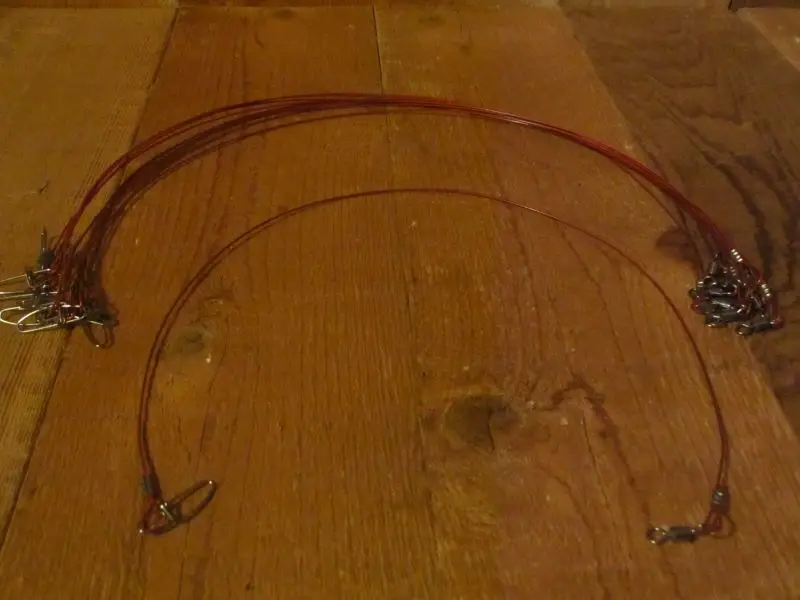
What are Good Uses For Steel Leaders
While steel leaders might not be good for walleye, they do have their uses. Steel leaders are incredibly strong, cut-resistant, tangle less often, and have corrosion resistance in saltwater. For these reasons, we use steel leaders often.
Our favorite use for a steel leader is what we call a bumper. A bumper leader is a piece of line that runs from the main line swivel to the first piece of tackle, such as a trolling flasher. This section should be extra strong to prevent break-offs at this point.
A more common use for steel leaders is from your main line to a jig or lure for deep-sea fishing. Many of the big fish in this environment can have razor-sharp teeth, like Lingcod. Also, when deep-sea fishing, it is common to bounce your jig into sharp rocks, and steel leader will prevent line abrasion. You don’t want a weak leader when you hook the big one.
Of course, there are more uses for steel leaders than these two examples, but we think these will convey their basic uses.
Conclusion
In conclusion, using a steel leader when fishing for walleye is unnecessary. While it has its benefits, this type of leader is best utilized with species that have much sharper teeth than that of a walleye.
Thanks to its durability, versatility, and near invisibility, fluorocarbon is one of the best leader materials to use when fishing for walleye. Additionally, the leader should be long enough to enable little distraction between the bait and the line coming from your fishing rod.
Tight lines!
